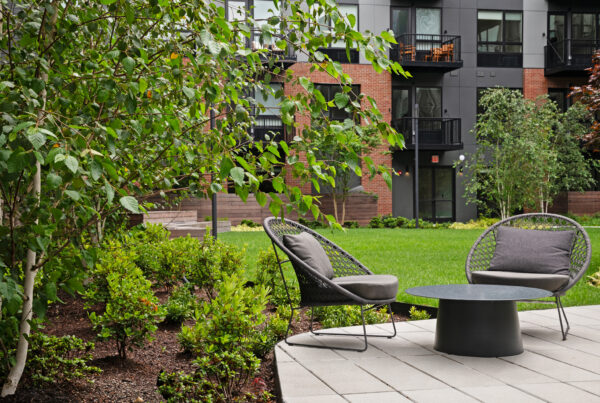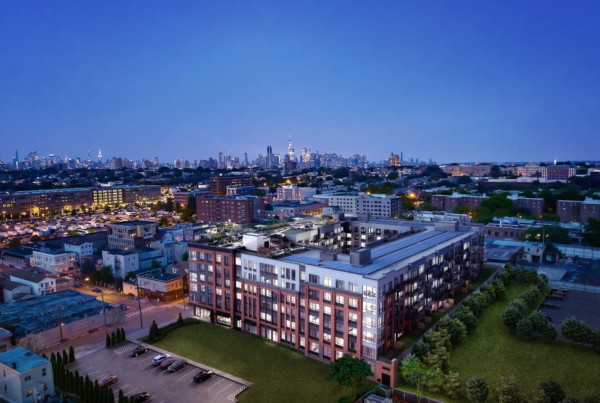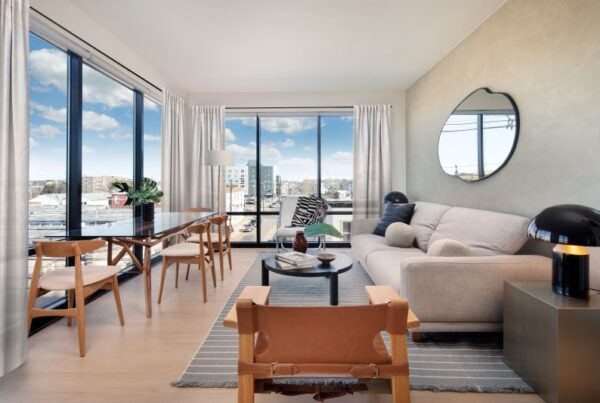Halpern, Hendler explain benefits of going green at Jersey City Summit for Real Estate Investment
Halpern Real Estate Ventures was building 49 Fisk St. on the West Side of Jersey City during the pandemic. It shows.
The sudden realization of how much society needs outdoor space and greenery is evident in the small park — one deep enough to handle a 20-foot tree — that was built in the center of the complex.
Joel Halpern, president of Halpern Real Estate Ventures, said its vision was to create a project that would have the feel of a tree-lined street in Brooklyn.
“We wanted an escape from the urban environment and have a real attraction for the center of the building,” he said.
By being one with nature, the six-story building also fits a new pattern in development: sustainability-friendly properties.
Halpern, speaking Monday on the amenities panel at the Jersey City Summit for Real Estate Investment, broke it down.
The rooftop of the building not only has amenities you might expect — barbecue stations and dog runs — but also a solar array to help offset energy costs, he said.
“While the courtyard is passive, the rooftop is activated,” he said.
There also is a rainwater collection — and the first anaerobic digester in a commercial multifamily property in the country.
Yeah, Halpern broke that down, too, since virtually no one knows what an anaerobic digester does.
“That’s going to allow us to take our compost organic products, and actually process it on site, which creates a liquid fertilizer, and also creates preheated water that we can move back into the building and to offset our energy costs,” he said.
Sustainability features — which have the benefit of reducing energy costs — should be considered an amenity, said fellow panelist Jeff Hendler, CEO of Logical Buildings.
Logical Buildings, a leading provider of decarbonization technology and environmental, social & governance solutions, specializes in helping buildings do just that.
In March, it announced it had closed a $110 million virtual power plant project with Keyframe Capital, which will be used to pursue virtual power plant projects within New York City- and New Jersey-based multifamily residential buildings.
The goal is to provide thousands of operators with reputational and financial incentives to invest in initiatives that will drive energy savings, lower greenhouse gas emissions and establish new channels for grid services revenue.
Hendler told the crowd this can be done in a variety of ways, including smart thermostats — products that allow operator-owners to engage their residents because they can measure and verify usage.
Logical buildings can do big things, too, such as helping buildings install chargers for EVs.
“Part of what we do for building owner-operators is to help them manage infrastructure, putting in an electric charging stations and managing that cost and turning it into an asset,” he said. “(They’re) providing the service; this is an amenity — and owners should be compensated for that.
“We’re helping them with software to do that in an effective and efficient manner.”
Hendler said that, in New York City, buildings are getting rebates from Con Ed for lower usage.
“Owners are not only lowering costs and carbon complying, but actually earning money,” he said. “It’s a true amenity that comes as an ROI that also comes with environmental impact.”


